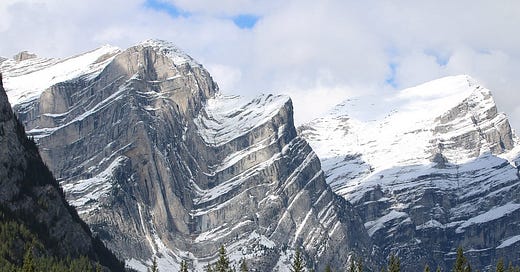
Welcome to Let’s Talk Outcrop, your newsletter all about Earth Science. I send weekly Tuesday and Friday emails explaining cutting-edge research, interesting topics in Earth Science, or examining fundamental Earth processes.
This series, Fold Friday, is exclusively for paid subscribers and offers an in-depth summary of some amazing folded formations I have found.
If you are currently a free subscriber and would like to upgrade to support my work and gain access to this series and the full archive sign up using the link below.
Geologic folds come in many shapes and sizes, ranging from miniature folds within hydrothermal veins to impressive folds spanning multiple mountain peaks. Folds can happen under a spectacular range of imposed stresses, rock lithification stages, and over multiple cycles. I hope to cover as many of these as I can through Fold Friday.
This week, we look at a fold within the Rocky Mountains which is massive in stature and visually spectacular.
Mount Kidd in the Kananaskis Range of the Canadian Rockies in southwest Alberta is a fabulous example of the power of tectonic forces over hundreds of millions of years. The geology of Mount Kidd represents the tectonic history of the Rocky Mountains as a whole, through a series of folding and thrusting from their formation, and glaciation cycles through ice-age periods.
The Canadian Rockies formed during the most recent compressive phase in North America called the Laramide Orogeny between 80-55 million years ago. The orogeny, or mountain-building process, was created by the subduction of the Farallon Plate beneath the North American Plate along the west coast of North America. The compression caused by subduction resulted in fold and thrust belts of sedimentary layers that were originally deposited beneath ancient seaways. These uplifted sedimentary units, along with metamorphic and volcanic geologic units, form the towering Rocky Mountains seen today.
Keep reading with a 7-day free trial
Subscribe to Let's Talk Outcrop to keep reading this post and get 7 days of free access to the full post archives.



